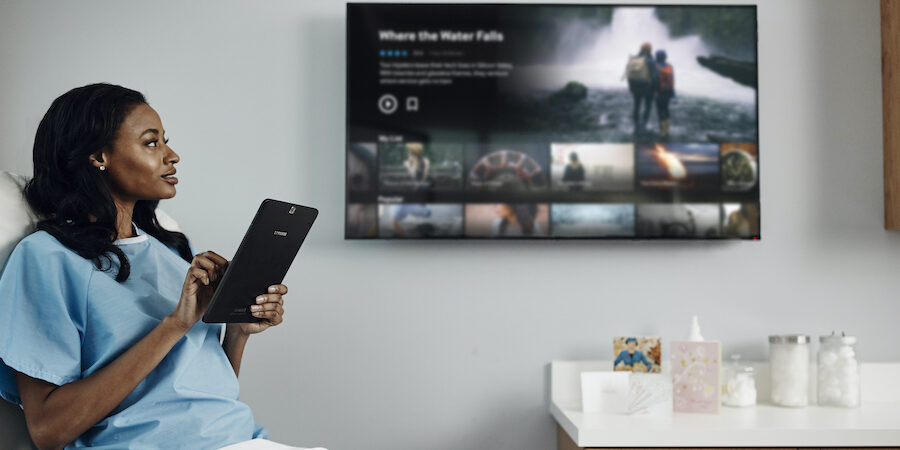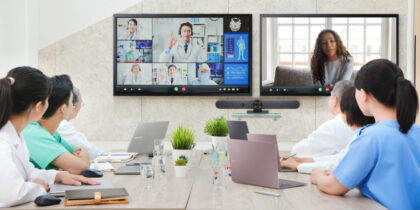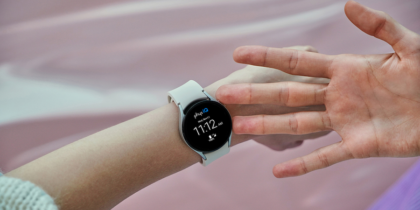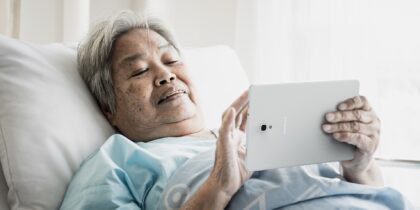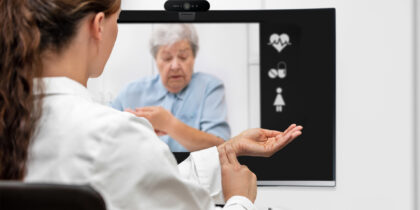Not that long ago, telehealth was primarily a stopgap solution during a time of crisis and confusion. Today, it is a permanent fixture in healthcare.
Virtual appointments are commonplace, improving patient access while helping alleviate the ongoing staffing crisis. Hospital-at-home initiatives continue to gain traction, as does remote monitoring. Health centers need reliable, high-performance monitors to ensure their telehealth offerings are efficient, effective and secure.
Telehealth: An old idea that’s here to stay
Telehealth has been a concept for decades. In 1879, a Lancet article discussed how talking to patients over the phone could reduce unnecessary in-person visits. In 1924, a Radio News magazine cover illustration showed an imagined video call with a doctor. Today, those speculations have become reality.
Before the pandemic, telehealth was largely used to deliver care to rural and other underserved patients. Today, telehealth supports routine care as well as remote monitoring and clinical collaboration. It helps healthcare providers and organizations meet patient where they are and delivery high quality care more efficiently.
The explains why now at least 74% of physicians work in practices that offer telehealth, according to the American Hospital Association. Telehealth is particularly prominent for primary care and medical specialists, with the Centers for Disease Control and Prevention reporting regular usage in both areas.
Most primary care physicians (76.7%) and medical specialists (73.1%) reported providing a similar quality of care during telemedicine visits as in-person visits.
Upgrade your monitor fleet
Hospitals and healthcare systems need to support patients’ telehealth needs today and for years to come. However, some still struggle to do so and need to upgrade their systems. Many just need the appropriate technology, such as the right monitor, to provide telehealth care more efficiently.
Create the patient room of the future — today
Explore key technologies for enhancing patient experience and care while supporting staff. Download Now
Clinicians who conduct video visits with patients and their caregivers can use Samsung S40VA Webcam Monitors. The 24-inch display offers enough screen space to visit with a patient virtually and review their health records at the same time, and its built-in HD camera, microphone and stereo speakers ensure clear and secure communication. It’s also compact enough for a tight workspace, and users can easily adjust the stand to their ideal viewing angle — even rotating it from landscape to portrait mode.
Remote location, immediate solution
Sometimes, doctors and nurses may be caring for many patients at once, requiring a more extensive setup. Using Samsung ViewFinity S65VC monitors as part of a 24/7 telehealth platform, patients and intensive care providers can connect remotely at any time — enhancing the quality of care throughout the entire system.
The monitors provide plenty of space for users to view multiple windows at a time, giving them simultaneous access to the remote camera view, patient records and other health apps with relevant information. This means no more shrinking windows, minimizing them or switching between screens. Clinicians can stay connected through video calls and streaming with no extra devices needed. The camera slides down into the monitor when not in use, to maintain a sleek profile.
These USB-C monitors also feature a single port for digital display, data and power. With fewer cables to manage, you save space and time and prevent user frustration. The curved screen mimics the human eye’s natural field of view, decreasing visual distortion, eye strain and fatigue.
Collaboration and coordination
Telehealth isn’t just for connecting patients and providers; it also helps connect providers to each other. Doctors and clinicians at different sites across campus, on the other side of town or across the country can still coordinate patient care over videoconference using webcam monitors designed to facilitate virtual meetings, such as Samsung S40VA Webcam Monitors.
On-site collaboration often requires sharing a monitor. For those situations, the Samsung ViewFinity S65VC Series of curved monitors is ideal for multiple viewers. Because most professional meetings remain virtual, webcam monitors make it easy for your clinical team to stay in top form and exchange ideas with colleagues. Healthcare professionals can also use either of these monitors for training, certification and continuing education.
Accurate and vivid images
While delivering remote patient care, providers also need to review medical images. Samsung S Series High-Resolution monitors allow clinicians to review these images more easily and accurately — an essential in healthcare. These 10-bit monitors display more than a billion colors. The S Series also features Adaptive Picture Technology, which reduces eye and muscle strain. The DisplayPort Out feature on some S Series models enables daisy chaining, so users can connect a series of monitors from a single PC output for a streamlined desk setup. After all, not everyone’s desk has room for a 49-inch curved monitor.
Transform the nursing station
For all the advances in remote connectivity, a lot of patient care is still in person, especially in the hospital setting. The right monitor can be transformative here, as well. Equipping nursing stations with large, centralized USB-C monitors improves efficiency with centralized information dashboards that update in real time, ensuring patient data is always accurate. Monitors that fully support USB-C can act as workstation hubs, and because they require fewer cables, they’re well-suited for nursing carts, where there’s no space to spare.
Future-proof your facility
Telehealth today requires hospital technology to step up. With the most innovative tools on hand, healthcare facilities can be ready for the expected and unexpected, supporting clinicians while ensuring everyone’s safety, security and efficiency.
Learn more about how digital solutions, such as the latest generation of monitors, support telehealth. Also consult this free white paper about how Samsung is helping to create the patient room of the future today.




